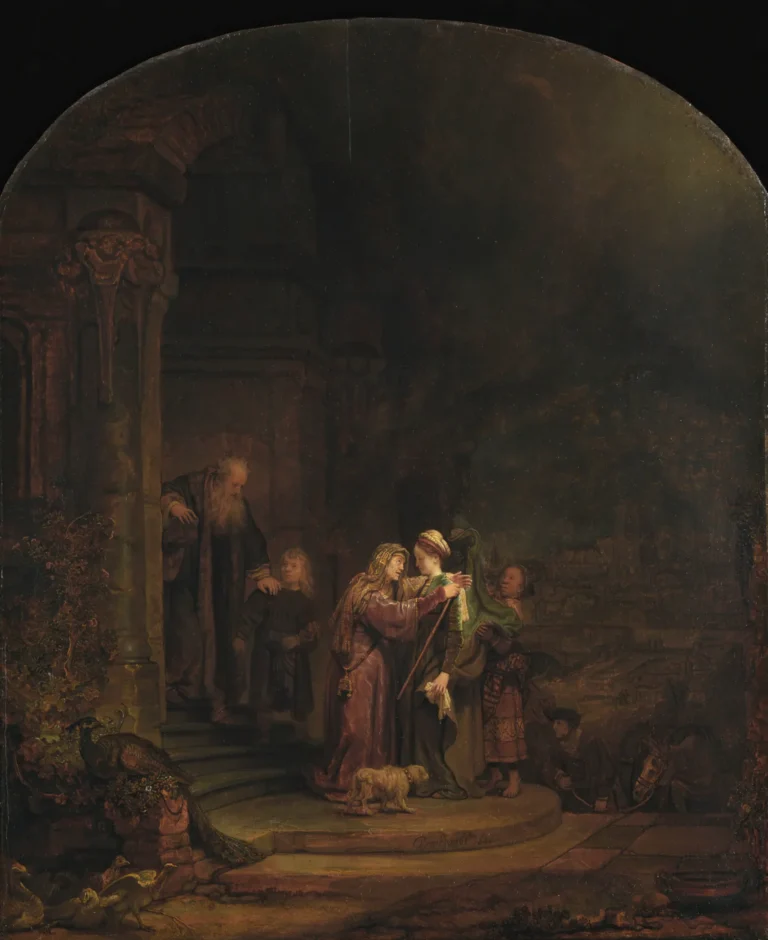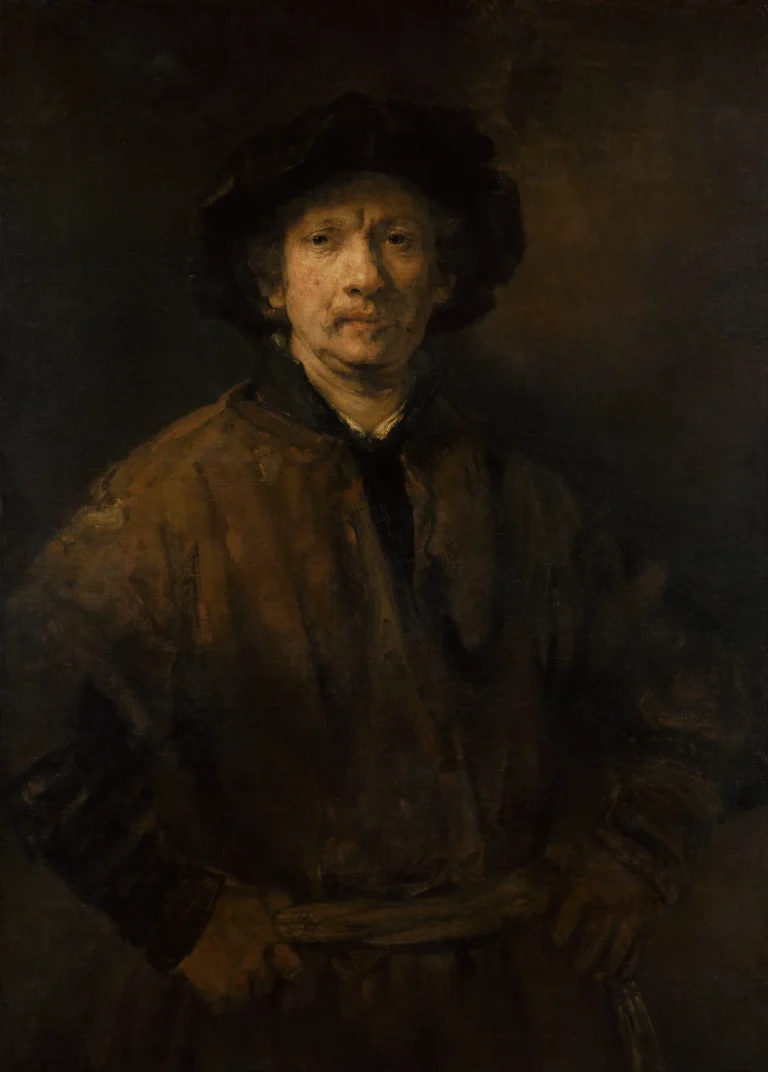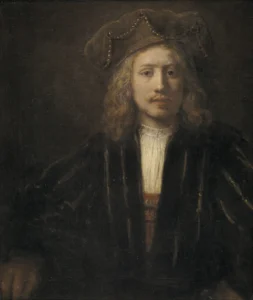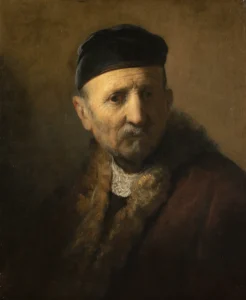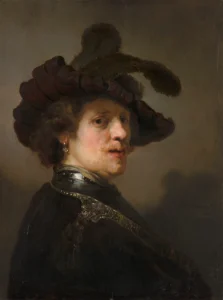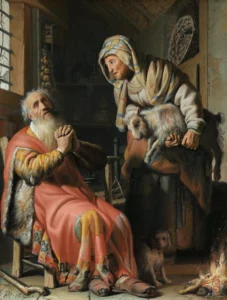The Visitation
The Visitation showcases a profound moment from the New Testament, where the Virgin Mary meets her cousin Elizabeth, both pregnant with pivotal biblical figures. The Baroque painting masterfully employs chiaroscuro, highlighting the emotional richness of the scene, adorned with symbolism reflecting faith, family, and cultural nuances of 17th-century Amsterdam. The artwork serves not only as a religious narrative but also as a personal testament to Rembrandt's life during a transformative period.
Year 1640
About the Artwork
Created in 1640, The Visitation stands out as Rembrandt's singular portrayal of this intimate biblical encounter. The artist uniquely captured the moment from the Gospel of Luke where Mary, depicted with a serene grace, greets Elizabeth, who is descending with help, symbolizing both their physical states and the spiritual joy of motherhood. The presence of significant symbols, like the dog representing loyalty and a peacock signifying Christ's incorruptibility, adds layers to the narrative. Adding to its depth, Rembrandt's personal context—his mother’s passing and his wife’s pregnancy—infused the work with intimate emotion. The painting's intricate provenance further enriches its story, linking it to notable collectors before finding its resting place in the Detroit Institute of Arts.
Did You Know
Rembrandt’s portrayal of Elizabeth is said to resemble his mother, reflecting the personal loss he experienced in the same year the painting was created as she passed away.
The depiction of a Black woman in The Visitation highlights the presence of Africans in Amsterdam during the 17th century, showcasing the cultural diversity of the time.
The Visitation is unique in Rembrandt’s body of work as his only representation of this scene, demonstrating his exceptional talent for intimate storytelling in biblical contexts.





